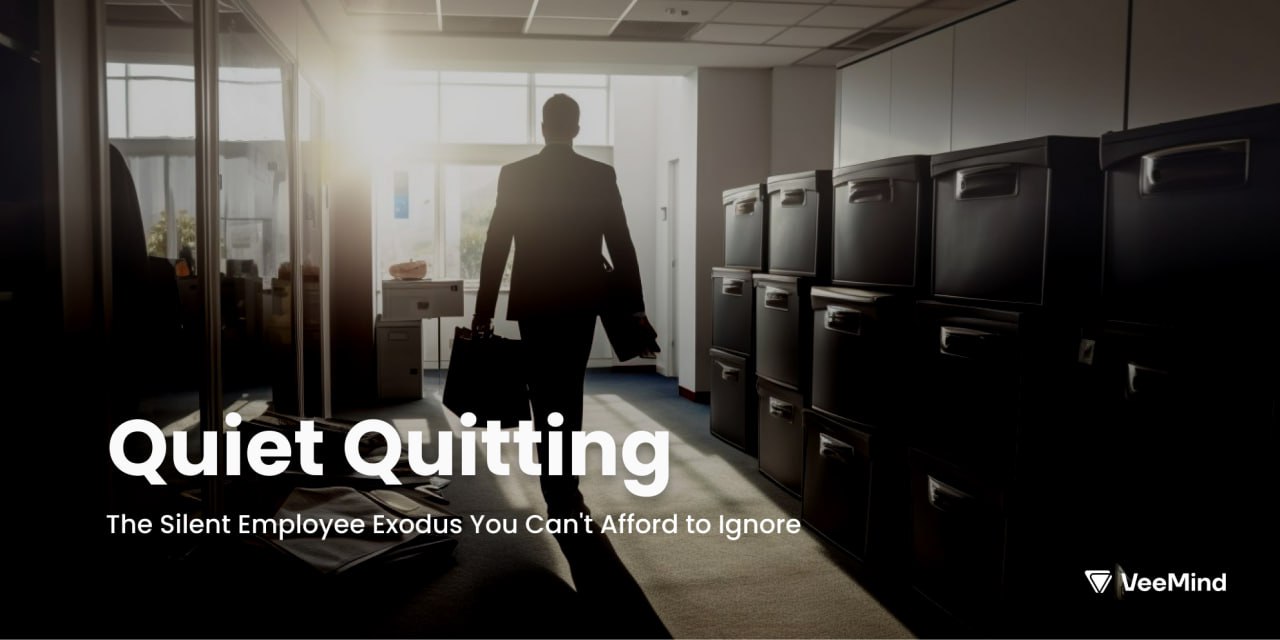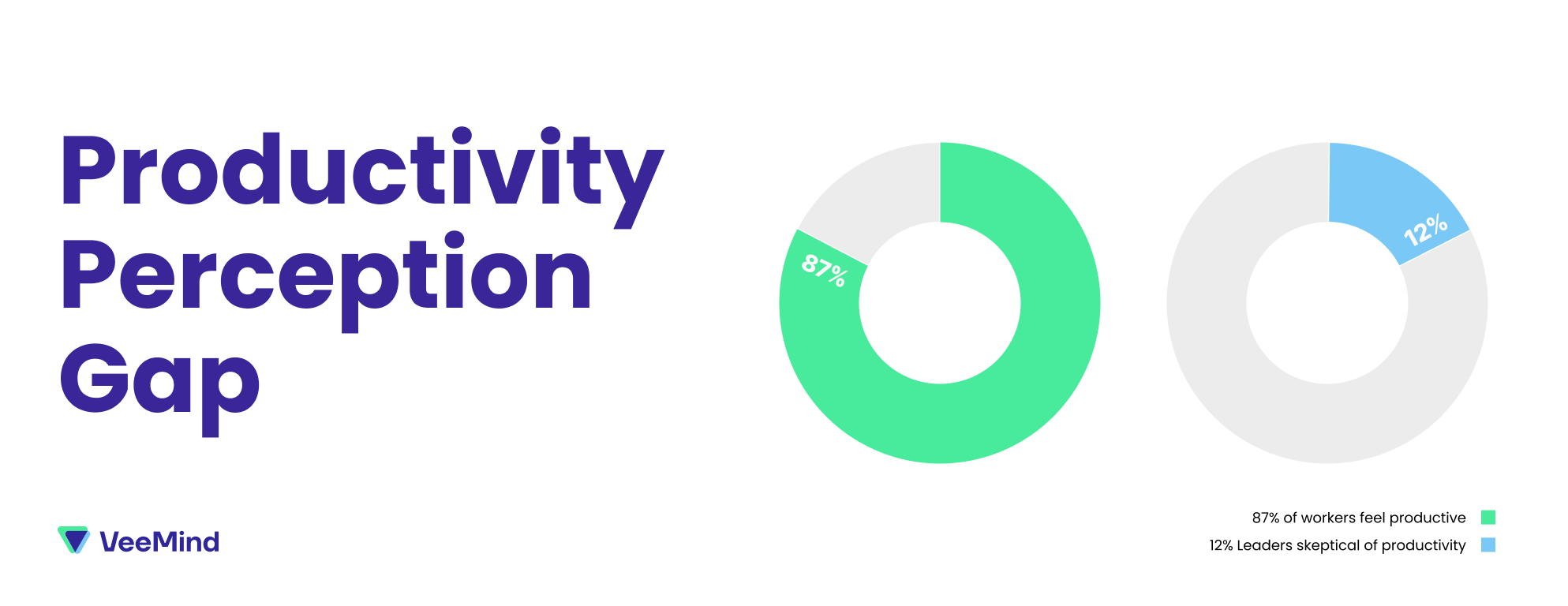Quiet Quitting - The Silent Employee Exodus You Can't Afford to Ignore

Quiet Quitting - The Silent Employee Exodus You Can’t Afford to Ignore
In 2022, the topic of quiet quitting dominated headlines as record monthly quit rates were set all around the world and here we are in 2023 and not much changed.
Quiet quitting is the act of employees putting in the least possible effort required to maintain their paychecks when they are burned out or unhappy. The idea is that since work is not the most important aspect of people’s lives, they should not be expected to put in extra hours without compensation and should have the freedom to pursue other endeavors outside of their employment. However, this idea is not entirely new. We have seen similar workplace practices, such as “phoning it in,” or the 80-20 rule. In this article, we will examine the concept of quiet quitting and explore how managers and business owners can handle it appropriately.
Workplace “happiness”
About 30 years ago, the concept of workplace “happiness” was non-existent.
In the past, employers expected their employees to be grateful for the opportunity to work and go the extra mile to get ahead. This meant coming in early, staying late, and showing commitment to the company. There was no expectation of receiving overtime for these extra hours. Managers were often encouraged to fire people when they took on a new position to demonstrate their authority, even if it was not warranted. It was also acceptable for managers to yell and berate employees for poor work, both privately and in front of peers. This management style made the concept of quiet quitting less appealing.
However, the concept of workplace “happiness” has emerged in recent years. Employees are now looking for more than just a job that pays the bills. They want to work in an environment where they feel appreciated and valued. They want a work-life balance that allows them to pursue their passions outside of work. The rise in mobile technology has only added to workplace dissatisfaction. Employers and clients now expect their employees to be available 24/7/365 since they know they have a mobile device on them at all times. This constant pinging of messages and notifications has taken its toll on employees, especially younger ones.
The mental trauma of surviving lockdown during the COVID-19 pandemic has had a significant impact, especially on younger single workers. They experienced extended periods of loneliness and isolation, which created a pent-up demand to interact and live life outside of a job that is still being conducted online. All these factors have led to a perfect storm for quiet quitting.
The gig economy is also providing opportunities for workers to make the same or more money without the structure and time commitments of full-time employment. Many workers, especially young ones, are willing to forgo some of the security and benefits of a full-time job. They tell themselves that they don’t need to climb the corporate ladder to be happy in life. However, it takes a certain amount of money to live in modern America with things we expect, such as home ownership, two cars, two vacations a year, eating out, and paying for college. If you don’t want to work hard to reach the top, you may not have the resources to live the life you want.
The productivity paradox
The economy has been thriving since the pandemic, and companies are now asking more of their employees, leading to burnout. The newest research by Microsoft shows that 87% of workers feel productive, but only 12% of leaders agree that they are, a scenario often referred to as the productivity paradox. Executives and managers don’t appreciate how hard their employees are working, and that’s a management issue that needs to be addressed.

Leaders need to address the problem of burnout, but employees should not simply disengage and quietly withdraw in response to a less-than-ideal work environment. Employees feeling overworked, poorly treated, or unproductive due to a poor work experience, could ideally be realized by the manager but should also address the problems proactive and speak up.
Providing feedback can be challenging, but if employees have the trust to approach their manager and they are actively listening, the risk of quiet quitting can be drastically lowered. And most companies are working hard to open up feedback channels.
Ending the cycle of quiet quitting
To end the cycle of quiet quitting organizations and leaders have to find a way to reignite the passion and the commitment of their workforce. Employee engagement and wellbeing are critical to the success of any company, and leaders and HR teams need to prioritize creating a culture of care to address these issues. This involves actively listening to employees, fostering a sense of belonging, recognizing individual needs, and addressing holistic wellness through competitive total rewards and comprehensive benefits. Companies can also promote mental wellness, subsidize healthcare costs, and offer financial wellness benefits to support employees in achieving financial success. By understanding and meeting employee needs, companies can attract and retain top talent while fostering a positive workplace culture.
In conclusion, preventing quiet quitting requires a proactive approach from managers and companies to create a positive work environment that prioritizes employee well-being, engagement, and fulfillment. This includes fostering open communication, empathy, mentorship, coaching, and a shared vision with purpose. By enhancing and mastering the elements of leadership, leaders can recognize early signs of unhappy employees and proactively create a work environment where employees feel valued, engaged, and motivated. By providing feedback, addressing burnout, and actively listening to employees, managers can significantly lower the risk of quiet quitting and create a better work environment for everyone. Ultimately, prioritizing employee well-being and engagement is not only the right thing to do, but it is also essential for the long-term success of the company.
Our service at VeeMind offers support for every manager in specific elements of great leadership. It can help realize, address and work on issues like quiet quitting by fostering open communication, empathy, a positive work culture, mentorship, coaching, and a shared vision with purpose. By enhancing and mastering VeeMinds six elements of great leadership, leaders can improve to recognize early signs of unhappy employees and can proactively create a work environment where employees feel valued, engaged, and motivated, and where burnout and quiet quitting are less likely to occur.


